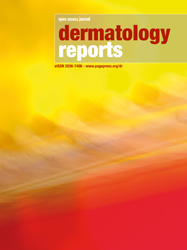Face mask-induced skin changes: a new common phenomenon during the coronavirus disease 2019 pandemic

All claims expressed in this article are solely those of the authors and do not necessarily represent those of their affiliated organizations, or those of the publisher, the editors and the reviewers. Any product that may be evaluated in this article or claim that may be made by its manufacturer is not guaranteed or endorsed by the publisher.
Authors
COVID-19 is a severe acute respiratory syndrome, and wearing a mask is an important preventive measure. However, long-term use can cause maskne, or mask-induced acne. This study evaluated the prevalence, clinical characteristics, and severity of mask-induced acne and its effect on pre-existing dermatosis using an online questionnaire. The questionnaire comprised 15 questions on 6 primary topics: demographic data, type of face mask, dermatological symptoms after using a mask, pre-existing dermatological conditions, the duration of use, and the effects of mask use on existing dermatological conditions. We included 1,025 participants; 48.6% had dermatological symptoms after using masks. The most common symptoms were red papules (33.8%) and itching (27.2%). Individuals who wore masks for more than 4 hours daily experienced more dermatological symptoms, for example, healthcare providers, who had a higher risk of mask-related dermatosis than participants with other occupations. Moreover, masks significantly increased the severity of rosacea, contact dermatitis, and seborrheic dermatitis. These results suggest that board-certified dermatologists should assess patients in larger-scale studies to determine adequate management strategies.
How to Cite

This work is licensed under a Creative Commons Attribution-NonCommercial 4.0 International License.








